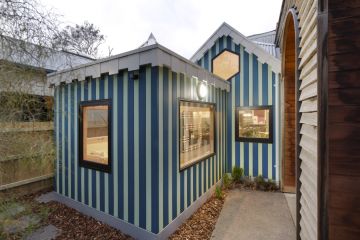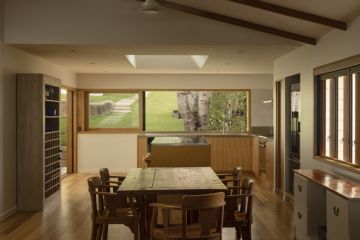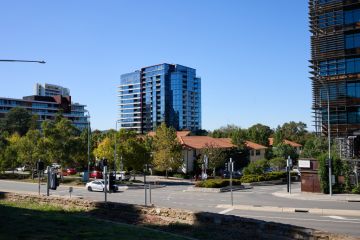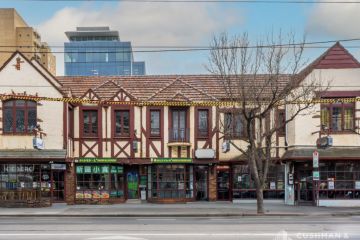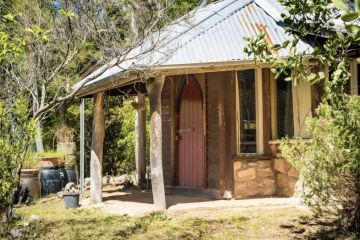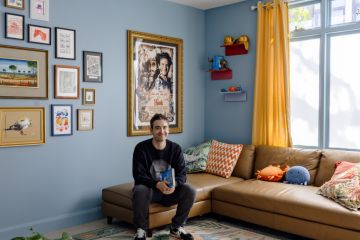How Kennedy, Martin and Newton shaped AFL legend Shane Crawford's next great act
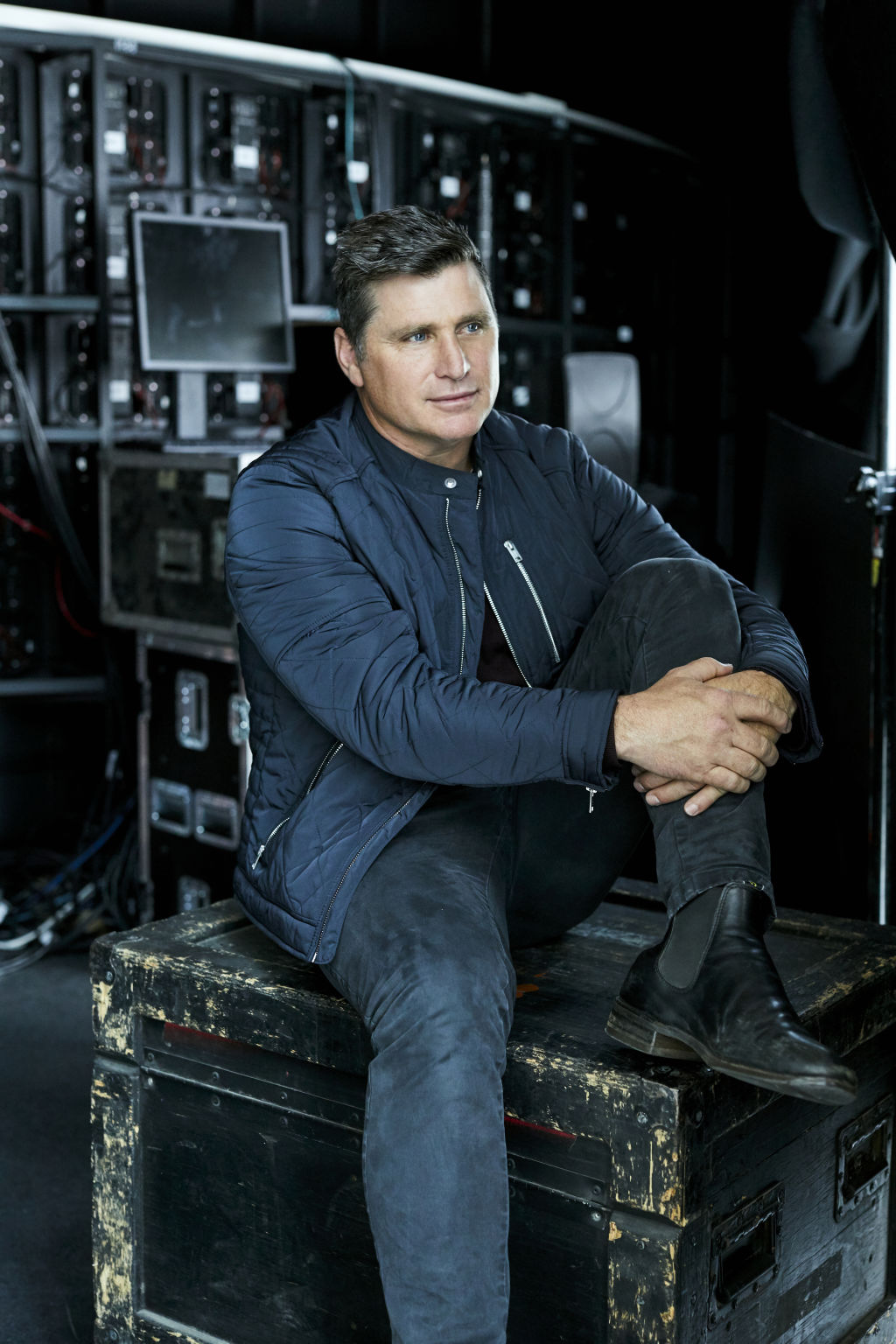
Even during his earliest stints in front of a television camera, before he’d called time on his stellar AFL career, Shane Crawford had an eye for the next act.
At Channel Nine’s old studios, in Richmond’s Bendigo Street, he’d sit in on the filming of Sale Of The Century and The Price Is Right to see how they came to life. In the corridors he’d connect with people from the production crew and the props department, anyone whose working world was “this place where magic was made”. When he wasn’t among The Footy Show’s panellists, he’d slip into the control truck and watch the levers of live TV being pulled.
His fascination wasn’t new, only the unprecedented access and the insights. Growing up in the southern NSW town of Finley, he had loved “the realness” of Graham Kennedy and Bert Newton, and how subtle shifts in pace made their comedy rise like dough in a tin. If he wasn’t at school, he’d camp in front of The Midday Show and study how Ray Martin went about his craft.
“When I started doing The Footy Show, years later, there were five or six cameras pointing at you from everywhere,” he recalls. “I said to Nine, ‘You’ve given me this opportunity, and I’m trying to be myself and have fun. But do you think someone can tell me what to do?’”
So, they sent him to Sydney to spend a day with an Australian television guru Peter Faiman, a producer of iconic shows that were fronted by Kennedy, Newton, Don Lane and Paul Hogan, and who directed the latter in Crocodile Dundee. Crawford remembers the experience as formative and utterly special.
As they watched old tapes, he peppered Faiman with questions. “Why do they do this?” “Why are they filming this way and not that way?” He draws regularly on the advice he received that day.
“A couple of key things,” notes Crawford. “He said, ‘Just always be who you are, be yourself. The audience connects with you because you’re real, and if you’re not they won’t.’ And he said, ‘Let things breathe.’ That’s why Kennedy and Newton and Hogan were so good. They let things breathe, allowed time for the audience to think and react.
“The best thing [Faiman] said: ‘There’s no rules. You do what works for you, go for it.’ I reckon I learnt more in one day than I would have in 20 years.”
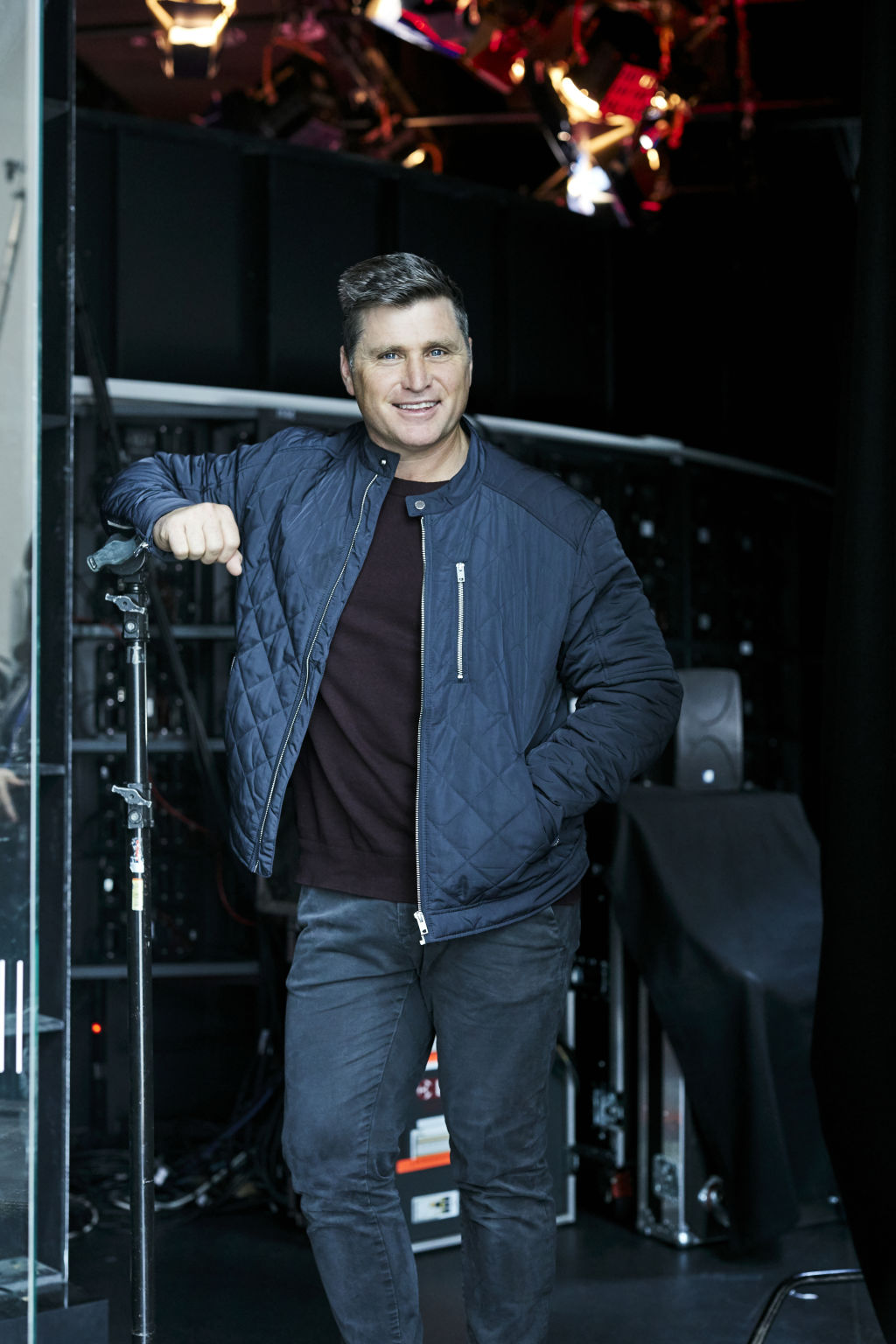
Doing “what works for you” has only enhanced Crawford’s love of television, and given him a CV that includes 12 years on Postcards, several kids’ shows and a star turn on Australia’s first Celebrity Apprentice. By running from Adelaide to Melbourne and cycling the Nullarbor to Perth, he’s raised millions for breast cancer research, all the while living the advice his mother gave her children: just get out there and have a go.
“I enjoy the process … the creative side,” he says of television. “The art of trying to connect with the audience, the chemistry you have with the people you’re doing the show with.”
Fun lies at the heart of it, which makes his latest venture – combining hosting and sideline commentary duties on the fourth season of Australian Ninja Warrior – kid-in-a-candy-shop stuff for a 45-year-old whose true calling could be playing Peter Pan.
Crawford was already a big Ninja Warrior fan, watching from the couch with sons Charlie, Ben, Jack and Harry, raucous times that must leave their mum, Olivia, in no doubt that she’s outnumbered and that resistance would be futile. After a brief fill-in stint on the show for Rebecca Maddern, he jumped at the chance for a deeper dive when the pandemic forced another ex-sportsman, former England cricketer Andrew “Freddie” Flintoff’, to forgo hosting duties and fly home to Manchester to be with his family.
Immediately, Crawford’s thoughts turned to childhood Sunday nights watching the homespun 1980s hit It’s A Knockout. He likened entering the Ninja Warrior studio at Melbourne Showgrounds to walking through the gates of Dreamworld.
“My eyes lit up the first time I saw the course,” he says. “It was just, ‘Wow!’ It must be so intimidating for people who’ve travelled from all over the country, who’ve been practising on hay bales and their own home-built apparatus, then they see this thing that’s lit up. It’s gigantic; it must blow their mind.”
Shooting long into the night with no live audience, he found himself drawn to the ninjas as if they were teammates. “I felt like I was a friend – I was pretty much the only one on site talking to them. I felt like a coach, I felt like a supporter. The ninjas would get up to the starting blocks and they had no-one, no crowd. They had me, doing a piece to camera and saying, ‘You can do this’.”
Tweaks to the season four landscape – including a “State of Origin” contest, and bonuses offered to the winner of a nightly “Power Tower” face-off between the two fastest ninjas – spiced up an already frenetic format.
Crawford spent 16 years and 305 games on an elite athlete’s treadmill, and retired a Brownlow Medallist, premiership player and Hawthorn great. He’s lived sporting professionalism from the inside, yet the strength, agility, flexibility and balance of the ninjas – ordinary folk from all walks of life – have staggered him.
“They’re incredible, some of the girls especially. They were absolutely mind-blowing. It’s awesome to watch. I came away gob-smacked by what these athletes can do.”
He was told “not to muck around on the course”, but confesses he couldn’t resist having a crack at the Warped Wall, a steeply curving ramp that rises into a vertical wall that competitors must scale. (“It took a few attempts, but I finally got there – I’m pretty determined.”) He wishes he could have taken his boys along to filming, but reckons they’d then have insisted on a course at home in the back yard, “and I’m not very good at building things”.
Soon after Alastair Clarkson arrived at Hawthorn, a few seasons before Crawford finished playing, the new coach urged him to scale back his media commitments. “But I want to do this when I stop playing football,” Crawford had responded. “I want to make shows, to be creative.” He convinced Clarkson the TV apprenticeship was his version of going to university.
It’s clearly working for him, as versatility – and living Faiman’s advice to be himself – are underpinning a career that has outlasted The Footy Show and continues to build. He’s humbled to be part of a world that fascinated him for so long, not least when he recalls meeting Nicole Kidman and Molly Meldrum as a boy, having travelled from Finley to Frankston to compete in BMX competitions. “A country boy meeting two people who were famous.”
A handful of madcap Guinness World Records – including one for having 153 Golden Orb spiders crawl over his near-naked body – attest to Crawford’s “have-a-go” mantra. All part of the show, but not how he wants to be remembered.
“I never set out to be looking back from my rocking chair saying, ‘I hold the world record for the most pairs of underpants worn at one time’.
“What’s important is just being happy. I think that’s the key for everyone these days – just to get yourself in a happy place where you can put a smile on your face and, hopefully, put a smile on someone else’s face too.”
Australian Ninja Warrior Grand Final airs Sunday August at 9pm.
Nine is an owner of this masthead.
We recommend
We thought you might like
States
Capital Cities
Capital Cities - Rentals
Popular Areas
Allhomes
More
